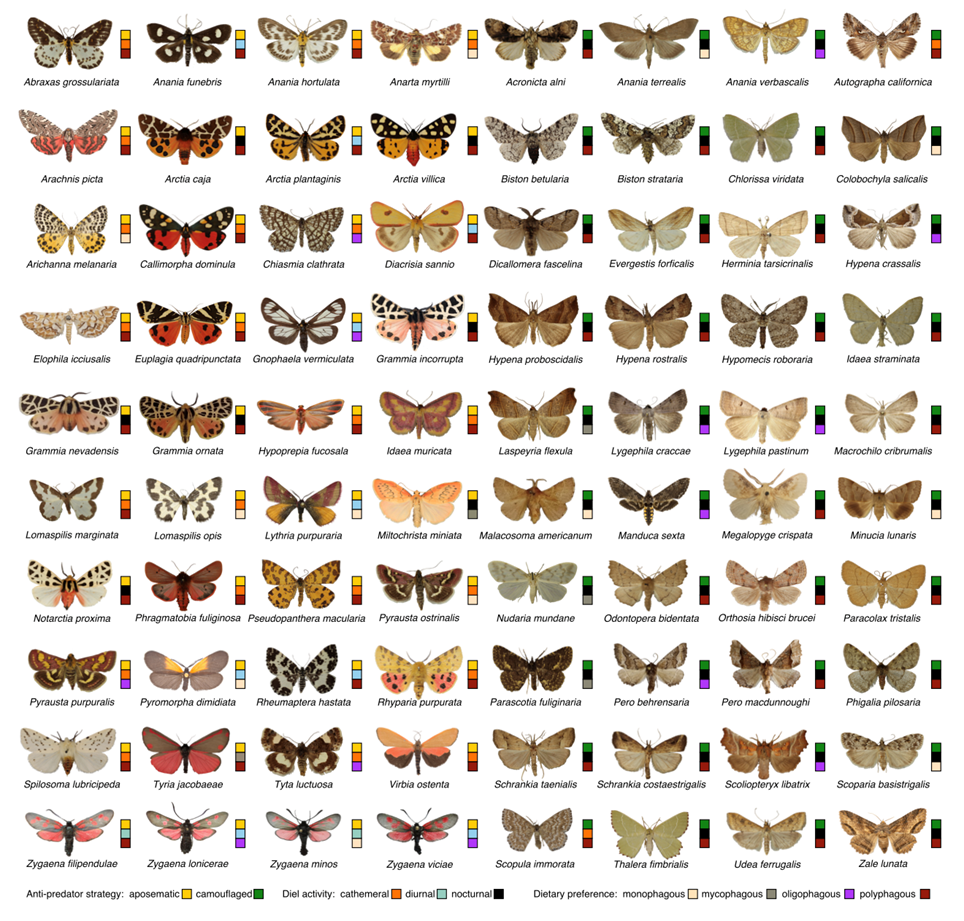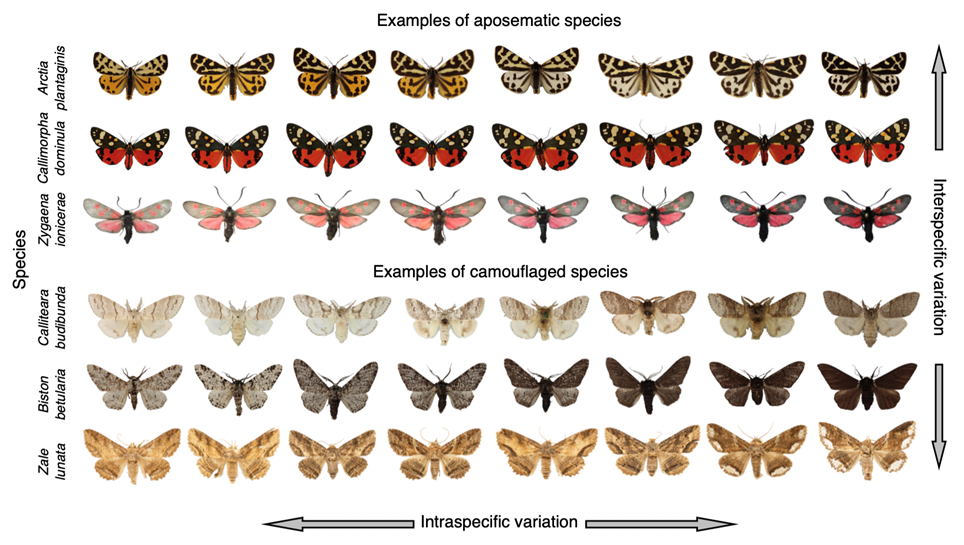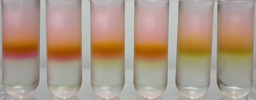A century-old hypothesis on animal colouration gets confirmed from digitised museum collections
Published in Ecology & Evolution

Animal defensive colourations provide a captivating avenue for evolutionary research because they involve an arms race between a prey’s survival and a predator’s meal. Prey animals evolve appearances that aid their survival, while predators adapt to overcome their prey's visual defences. However, comprehending the evolutionary consequences of predator pressures on prey colouration has proven challenging, especially in large-scale studies investigating how predators select colouration in wild animals. Recently, advancements in digitising museum collections have offered an open science solution for research, enabling large sample sizes and diverse specimens from different locations and time periods. This study uses museum collections and image analysis software to investigate how predator selection affects prey colourations in two anti-predation strategies.
A centuries-old hypothesis is put to the test:
Prey animals use many defence strategies to avoid being eaten by predators that rely on sight. For example, cryptic animals try to blend into their habitats to avoid detection. On the other hand, aposematic animals use bright warning colours to signal that they're distasteful or even toxic. These strategies are thought to work in opposite ways. For cryptic animals, it's better to be variable in colour patterning, as predators find them using a search image constructed of pattern and colour cues learned from the prey they have seen earlier (Allen and Clarke 1984; Poulton 1890). So, if you look different from the others, you should be more likely to survive. For aposematic animals, it should be better to look like everyone else (Endler and Mappes 2004; Müller 1878). Predators must learn that brightly coloured prey is not good to eat and remember that information when they see others that look similar. This idea is supported by laboratory and field experiments, where cryptic prey do better when individuals vary in appearance, and aposematic prey do better when they look alike (for example, Chouteau et al. 2016; Troscianko et al. 2021). Yet, we also observe a dazzling quantity of variation in wild aposematic prey, which has puzzled biologists for decades (Mappes et al. 2005). Until now, no one has been able to systematically test whether individuals in wild cryptic animals really exhibit more variation in appearance than aposematic animals.
Using digitised collections to survey species morphology:
We compared colour and pattern variation in cryptic and aposematic moths from 82 taxa across North America and Europe to test this theory. To obtain representative samples of variation between individuals within a species, we collected 20-30 photos of each morphotype included in this study. The task proved more challenging than expected because we had to account for biogeographical variation unrelated to predator pressure. Effectively, this means that we selected samples that were sufficiently close to each other in space and time so that we could be confident that variation was due to predator pressure and not something else. This extensive effort in online biodiversity and museum collections yielded close to 2800 photos from three databases, including digitised specimens from 15 museums in the northern hemisphere.

Analysing variation in individual appearances within species:
We then compared variability between individuals within a species across moth species categorised as either cryptic or aposematic. We also accounted for activity patterns and diets that could explain the variability patterns. All data was controlled using evolutionary relationships. We used ImageJ and micaToolbox to reveal if individuals within a species varied in colouration and if their colour patterns varied in size or coverage. We then employed an analysis of variance to test which antipredator strategy, aposematic or cryptic, had more within-species variation in appearances.

Classical hypothesis verified, but only for pattern variation:
Our analyses supported the classical hypothesis that phenotypic variability is greater in cryptic animals than in aposematic animals. Cryptic moth species exhibited more pattern variation in both fore- and hind-wing patterning than aposematic ones. However, colour-based variation did not differ significantly between the two antipredation strategies. This suggests that pattern variability may be more crucial in disrupting predators' search images while maintaining essential colour features for camouflaging or signalling on specific surfaces in their habitats. Warning signalling purpose in aposematic animals may also allow for colour variation in larger scale than has been expected previously.
High quality online collections will aid cracking large evolutionary questions in the future:
Museum collections are realising their full potential in scientific research through digitisation. Online databases are indispensable for research requiring high sample sizes and variability in specimen origins, offering accessibility for high-quality research in any circumstance, such as during the COVID-19 pandemic. Many collections are only in the process of getting digitised, potentially providing countless opportunities to test hypotheses on evolutionary and ecological interactions. However, image analysis is sensitive to many factors, which are uncontrollable when using online collections. We urge those digitising museum collections to exercise extra care in the process and especially, include a scale for sizing samples, enough information on imaging conditions and the specimen’s metadata. By employing the highest quality digitised collections of wild specimens available at the time of our research, we were able to verify a long-standing evolutionary hypothesis that cryptic prey are selected to be more variable in appearance than aposematic prey.
Citations:
Allen, J., and B. Clarke. 1984. Frequency dependent selection: homage to EB Poulton. Biological Journal of the Linnean Society 23:15-18.
Chouteau, M., M. Arias, and M. Joron. 2016. Warning signals are under positive frequency-dependent selection in nature. Proceedings of the national Academy of Sciences 113:2164-2169.
Endler, J. A., and J. Mappes. 2004. Predator mixes and the conspicuousness of aposematic signals. The American Naturalist 163:532-547.
Mappes, J., N. Marples, and J. A. Endler. 2005. The complex business of survival by aposematism. Trends in ecology & evolution 20:598-603.
Müller, F. 1878, Über die vortheile der mimicry bei schmetterlingen.
Poulton, E. B. 1890, The colours of animals: their meaning and use, especially considered in the case of insects, v. 67, D. Appleton.
Troscianko, J., O. Nokelainen, J. Skelhorn, and M. Stevens. 2021. Variable crab camouflage patterns defeat search image formation. Communications biology 4:287.
Follow the Topic
-
Nature Communications

An open access, multidisciplinary journal dedicated to publishing high-quality research in all areas of the biological, health, physical, chemical and Earth sciences.
Related Collections
With Collections, you can get published faster and increase your visibility.
Women's Health
Publishing Model: Hybrid
Deadline: Ongoing
Advances in neurodegenerative diseases
Publishing Model: Hybrid
Deadline: Dec 24, 2025




Please sign in or register for FREE
If you are a registered user on Research Communities by Springer Nature, please sign in